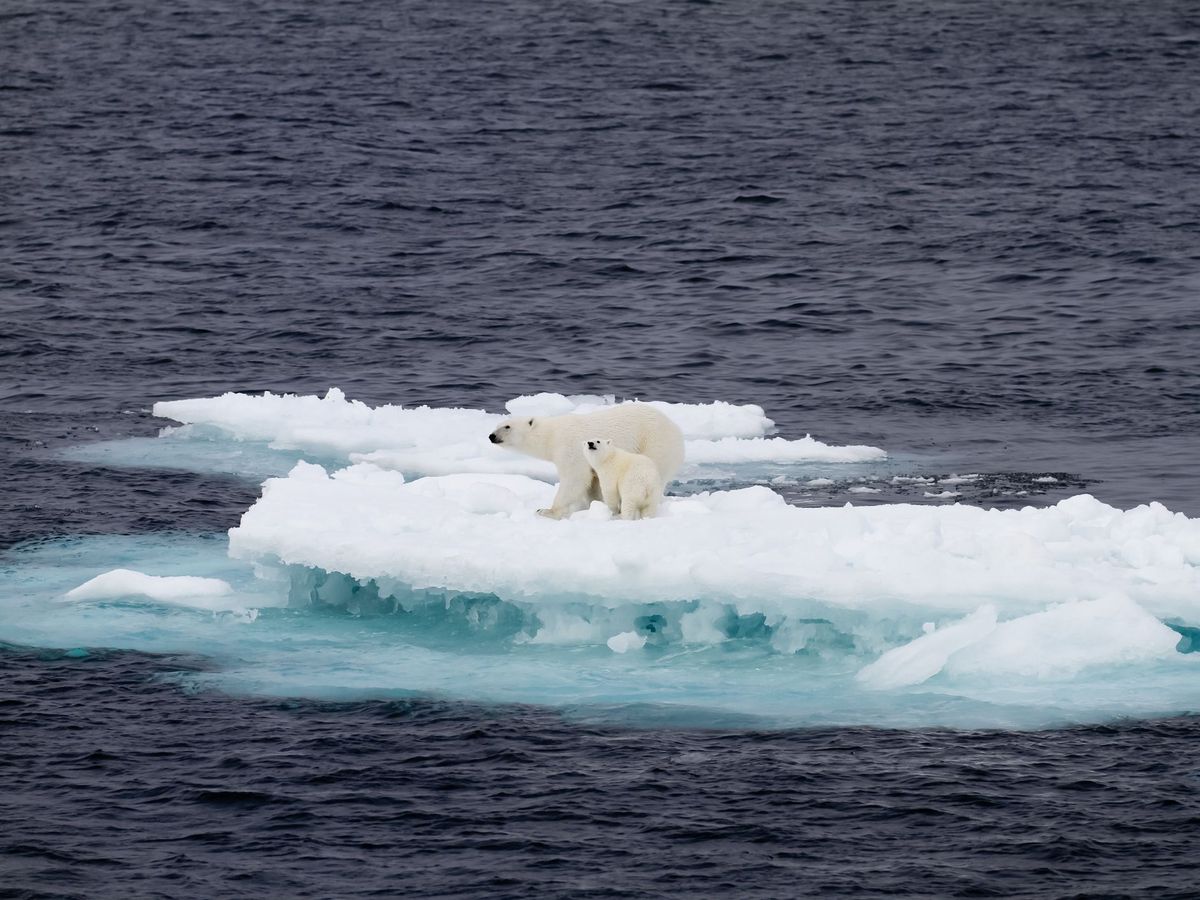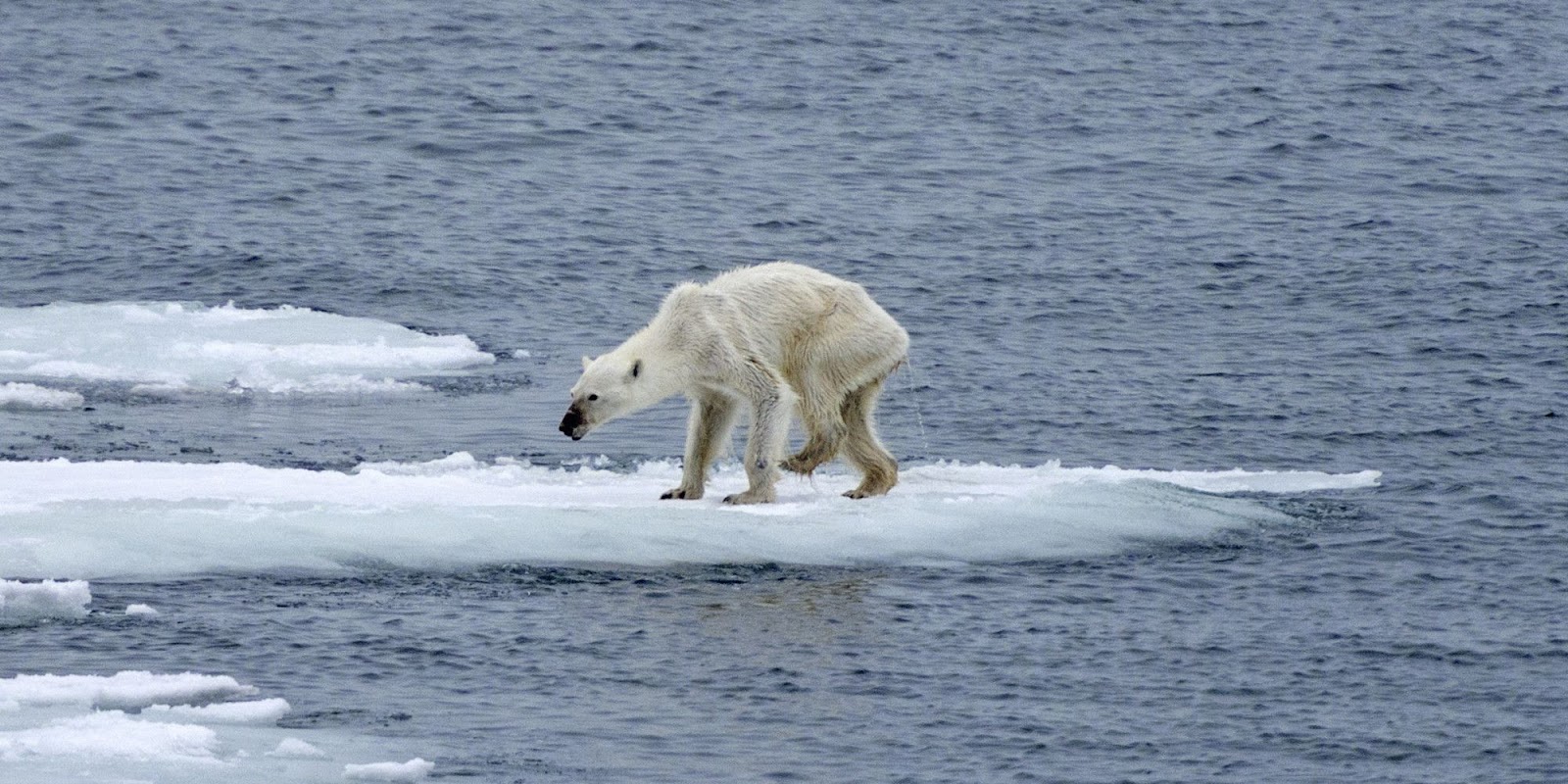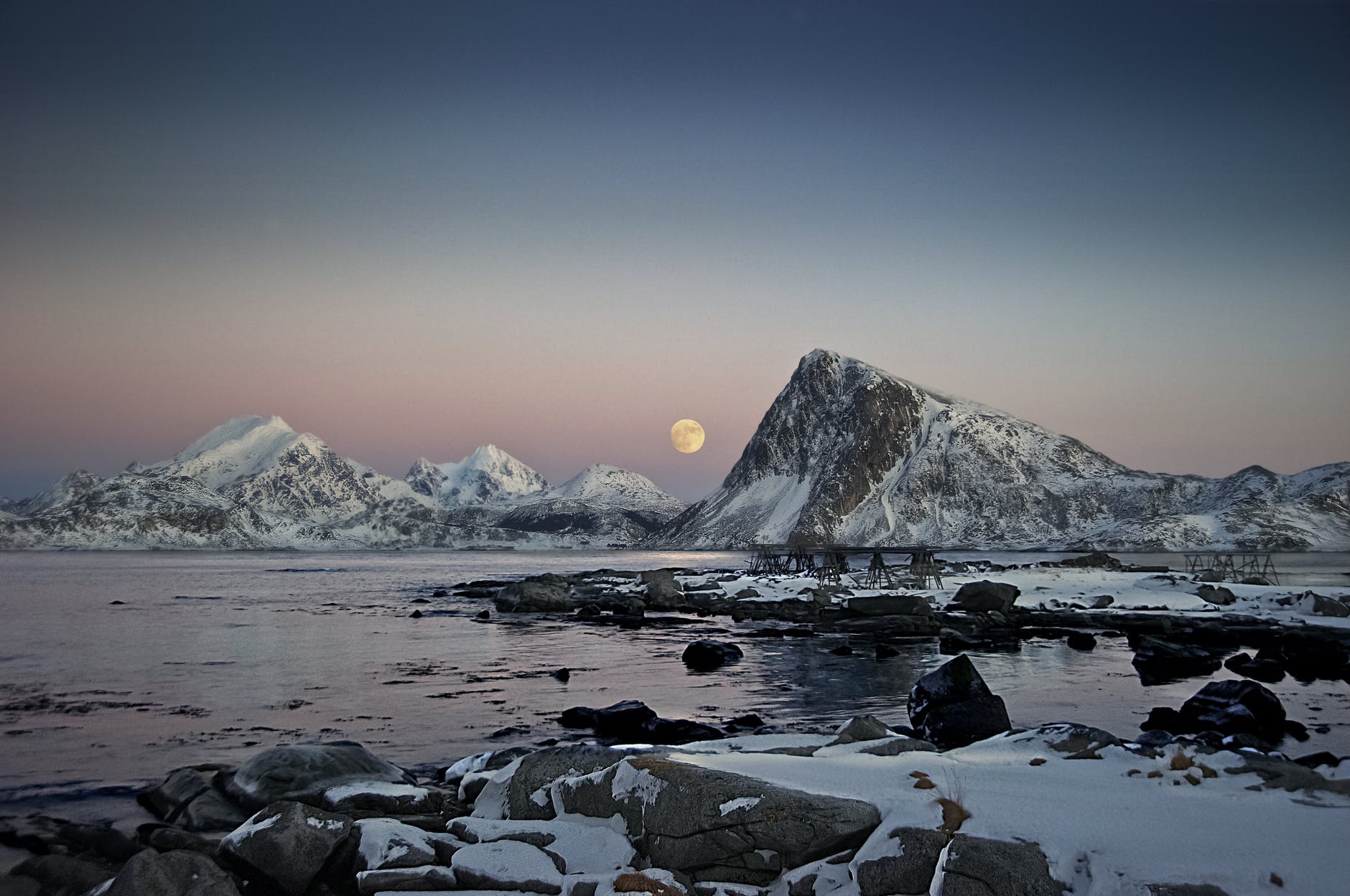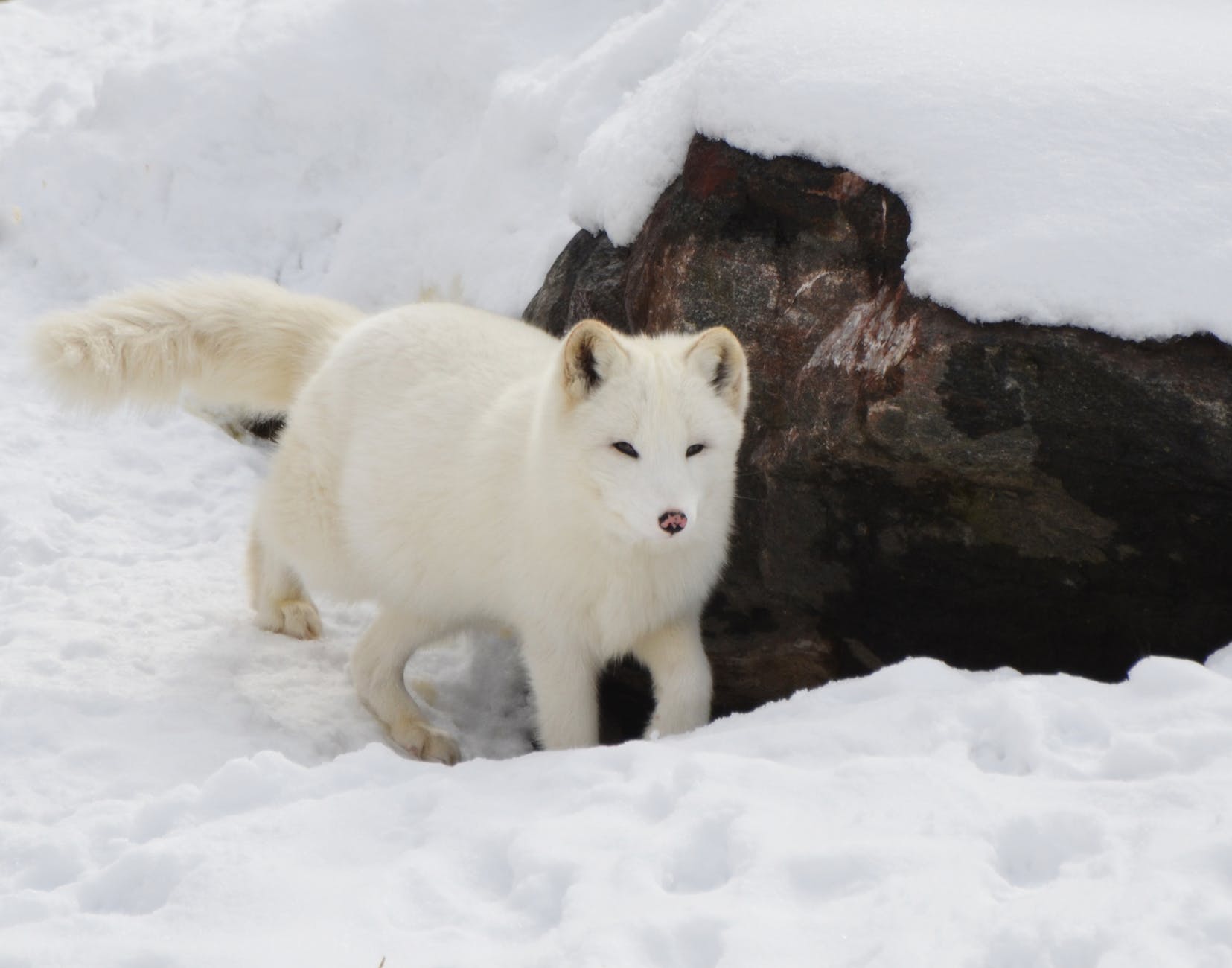How does climate change affect arctic animals?

A few minutes every morning is all you need.
Stay up to date on the world's Headlines and Human Stories. It's fun, it's factual, it's fluff-free.
The Arctic is a remote place in the northernmost part of the Earth with extreme environmental conditions. Many people may picture large icebergs, vast expanses of snow and animals with stunning white fur when they imagine this polar region.
But, some other images that are increasingly associated with the Arctic are of these majestic animals stranded on lone icebergs or emaciated from a lack of food. The photo above of a starving polar bear was taken by German photographer and conservationist Kerstin Langenberger and shared more than 51,000 times on Facebook.

Although Langenberger admits that she can’t demonstrate a direct connection between climate change and the bear she photographed, she doesn’t discount that climate change may have something to do with it.
“Climate change is undeniable," she said. “It is happening and we have to do something about it. And this photo, I can say to all of you: Look at it."
To fully understand the state of the Arctic, it’s essential to know what climate change is and how different parts of the Arctic and its wildlife are affected by climate change. A few movements are also trying to help with conservation efforts in the Arctic, so there are several ways for you to get involved.
What is climate change?

NASA defines climate change as a “long-term change in the average weather patterns that have come to define Earth’s local, regional and global climates.” When climate change is discussed as a pressing issue facing the world, it is because these changes in weather patterns cause many different problems for life on Earth.
Climate change refers to broad weather changes seen globally. On the other hand, global warming is the specific phenomenon of rising average surface temperatures. Climate change is an umbrella term that global warming fits under.
How is climate change affecting the Arctic?
No area of the planet will escape the effects of climate change, as the Earth only has one climate system. This system is a complex global framework of several components, including the atmosphere, the hydrosphere, the cryosphere, the land surface and the biosphere. So, climate change will inevitably affect all of the world’s ecosystems.
The Arctic is seeing many changes due to global warming. While average temperatures are rising across the globe, the temperature in the Arctic reportedly rises at three times the global average. We can clearly see these changes in its ocean and polar ice caps.
The Arctic Ocean
Every ecosystem is made of an intricate and delicate chain of different species that interact with each other and maintain a balance. When that balance is disrupted somehow, whether by humans or organic problems like disease, all of these species may experience dramatic shifts.
For example, while the Arctic Ocean has typically been covered in ice for most of the year, that ice is beginning to melt due to increased global temperatures. Because many species rely on sea ice coverage for hunting grounds or to maintain certain living conditions, the ecosystem is thrown into turmoil as the sea ice continues to disappear.
The polar ice caps
The primary issue facing the polar ice caps now is unprecedented levels of melting due to global warming. The World Wildlife Foundation (WWF) reports, “We lose Arctic sea ice at a rate of almost 13% per decade,” and that we have the potential to see an ice-free Arctic by the summer of 2040.
Another major issue is that global sea levels will rise as these ice caps melt into the ocean, affecting coastal communities, island nations and other environments. The impact of melting ice caps is profound and wide-ranging, from affecting wildlife and global temperatures to food crops and weather patterns.
How does climate change affect arctic animals?

Arctic wildlife faces many challenges due to environmental effects caused by climate change. For example, global warming poses risks to food access, habitat compatibility and potentially encouraging invasive species and diseases, to name just a few.
It can be difficult to visualize the threats posed by climate change without knowing about the animals that are truly at risk. While the ecosystem of the Arctic is thrown off from climate change, several species are facing impending threats. A few examples include:
- Walruses – Walruses typically use sea ice to rest and protect their offspring while they search underwater for food. The loss of ice in their arctic habitats means they are forced to move onshore. On the shore, they face threats from predators like polar bears and humans.
- Reindeer – Reindeer usually migrate to find food, trekking across the Arctic through the snow. But, climate change has made it necessary for reindeer to swim across areas that were previously frozen. In the process, many young reindeer are susceptible to drowning. Also, it’s harder for them to graze when they do find their food, as increased rain has covered plants in hard ice rather than snow.
- Polar bears – Some of the most haunting photographs associated with climate change show emaciated polar bears stranded on small ice sheets and desperate for food. Unfortunately, this image may become even more common, as polar bears are forced to travel further for food as the sea ice they hunt on is diminished. The WWF estimates that we could lose more than 30% of the world’s polar bears by 2050 if we don’t make significant changes.
Other species at risk from arctic climate change include narwhals, arctic foxes, orcas, lemmings, beluga whales, red knots (wading birds) and the muskox. The threats to these animals have made many of them endangered species.
How can we stop climate change in the arctic?
Preventing climate change in the Arctic means preventing climate change around the world. Climate change is an issue that the entire world faces, and it must be solved together with global coordination. So, what can be done to stop global warming?
The Union of Concerned Scientists is one organization that analyzes the threats of climate change and proposes solutions for reducing and deterring them. The most significant causes of climate change are large carbon emissions and the overabundance of carbon dioxide and greenhouse gases in the atmosphere. These are issues perpetuated by industrial sources and must be tackled with legislation and regulation.
The UN regularly convenes meetings between nations to develop effective policy goals related to slowing climate change. The 2019 Climate Action Summit was one recent meeting where these issues came into play, and the UN outlined their proposed initiatives in a detailed guide.
The 26th UN Climate Change Conference of the Parties (COP26) was hosted from October 31 – November 12, 2021. This conference brought many members together to discuss climate goals for the world. One of the results of this event was the Glasgow Climate Pact, where the gathered parties pledged to follow specific actions to keep the global average temperature increase below 1.5 degrees Celsius.
On top of the global initiatives enacted by the members of COP26, the UN has also offered guidance on how individuals can address climate change. In addition to reducing your carbon footprint, it is also important to contact local representatives about enacting policies that focus on climate change action and sustainable energy.
Climate change will undoubtedly affect every living being across the globe. Understanding what climate change really is and being aware of how the environment and animals are affected is the first step to making a change.
To combat climate change in any particular region, we must confront the issue of climate change all around the world.
Have a tip or story? Get in touch with our reporters at tips@themilsource.com




Comments ()